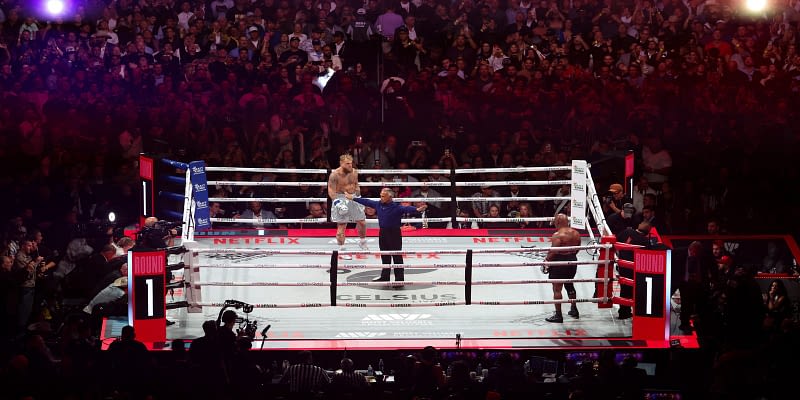Mike Tyson vs. Jake Paul: A Clash Of Legends And Social Media Influencers Requires Cutting-Edge Technology
The sporting world loves a spectacle, and nothing screams “spectacle” quite like a matchup between boxing legend Mike Tyson and YouTube sensation-turned-fighter Jake Paul. But this fight relied on much more than just the athletes’ abilities inside the ring—it needed the help of cutting-edge video technology to keep fans engaged and the action clear. Here’s everything you need to know about how screens—yes, screens—played a pivotal role in this surreal showdown.
The Combatants: Iron Mike vs. The Problem Child
Before we even get into the tech, let’s talk about the fighters. Mike Tyson, known in his prime years as “Iron Mike,” needs no introduction. A former heavyweight champion with an intimidating aura, Tyson was a juggernaut in the late 80s and early 90s. Despite now being in his late 50s, Tyson’s massive fanbase was eager to see him return to the ring.
On the other hand, Jake Paul, a social media influencer who’s carved out a space in the world of celebrity boxing, brings his own kind of fame to the mix. Known for his brash persona, Paul has transitioned from uploading viral videos to dishing out real punches. Jake Paul aims to prove that he’s not just a “YouTuber,” but a legitimate fighter.
This surprising matchup generated massive buzz, particularly because of the stark contrasts between the two fighters. Old-school boxing meets new-age digital culture in this fight—which, to no one’s surprise, was a pay-per-view magnet. But as much attention as the fighters themselves grabbed, the modern tools of the trade—hello, giant screens—became equally vital to making this fight unforgettable.
Let’s Talk About The Screens—Why Were They Necessary?
Here’s where things get interesting. You’re probably wondering, “Why does a fight between two well-known names need oversized video boards?” Great question. The truth is, the reliance on technology wasn’t just to enhance the spectacle—it was essential for spectators to follow the action.
In massive venues, especially for a high-profile boxing match like this, visibility can be an issue for the thousands of fans in attendance. While some people had ringside seats, huge portions of the audience were sitting far from the action. And when you’re talking about a sport like boxing, where finesse and detail can make a big difference, missing those smaller details—like a carefully timed jab or subtle footwork—really impacts the viewing experience.
Enter the massive video boards. These bad boys help project the action with crystal-clear quality, ensuring every fan gets a premium view, regardless of their seat. Unlike the old days where bad seats equaled a compromised view, today’s big fights make use of video technology to level the playing field—at least when it comes to viewing angles.
The Role of Video Technology
So, what kind of technology are we talking about here? The setup featured high-definition video boards that displayed every punch, every grimace, and every bit of drama for fans inside the venue. According to experts, the use of these video displays has revolutionized the live combat sports experience. Not only does it enhance what fans can see from their seats, but it also brings an added layer of excitement and immersion.
It’s almost like watching the fight in ultra-HD from your couch, but with the added excitement of being at the event live. Surround sound, live commentary, and the intense energy of a huge venue all contribute to the experience. But without these ginormous screens, much of the detail-driven excitement of boxing could be lost on the live viewing audience.
Even more interesting, the video boards did more than just display the fight. They also provided key statistics, instant replays, and close-ups that allowed fans to see exactly what was happening down to the last detail. In fast-paced matches like this, catching every moment matters, and advanced technology allowed even the most fleeting of movements to be captured and displayed in an engaging way.
Pay-Per-View Couldn’t Be Left Behind
Let’s not forget the power of pay-per-view (PPV) revenue in a bout like this. While fans in the arena benefited from the huge video screens, consumers at home were also treated to a top-tier viewing experience. The PPV event included dynamic camera angles, slow-motion replays, and, of course, the heart-pumping close-ups that make you feel like you’re right there.
Boxing, like many other sports, increasingly relies on broadcasting deals and online streaming to bring in revenue. For this fight in particular, many of Jake Paul’s younger fans tuned in digitally—streaming via their phones, laptops, or televisions. Paul’s influence stretches far beyond the boxing ring, as he’s known for leveraging digital platforms for engagement. About half the buzz for this fight wasn’t even in the ring—it was on social media where fans debated who would win and shared clips of the fight.
The Importance of Social Media Engagement
Speaking of social media, you’d have to be living under a rock to not know just how much it influences modern sports culture. Jake Paul, perhaps better than anyone else in the boxing world right now, understands how to utilize platforms like Instagram, TikTok, and Twitter to drum up attention and keep eyes on him. From calling out opponents in videos to live-tweeting his interactions with flashbacks of his training and fight clips, Paul managed to keep people talking.
Tyson, though less social media savvy, still commands almost mythic status. His presence in the sport is such that he doesn’t need social media as much as Paul. Fans from the ’80s and ’90s who stuck by Tyson were keen on watching the legend give it another go, even against a much younger and arguably less experienced fighter.
The social media buzz transcended the actual fight itself. Clips of the pre-fight pressers, training footage, and even highlight reels of their exchanges during the bout were plastered everywhere online. And let’s be real here, without social platforms boosting this fight’s visibility, it might not have become the pop culture moment it did.
The Impact on Future Fights
So what does this mean for the future of boxing—both in terms of fighting styles and how fans watch the sport? There’s no denying that the blend of legendary athletes and new-age influencers has opened the boxing realm to younger, digitally native viewers. With Jake Paul bringing in younger crowds through social media and streaming, legacy fighters like Tyson can still make a huge impact.
- Boxing remains a sport where legends like Mike Tyson can always draw a crowd.
- Social media influencers entering combat sports attract a younger, more internet-savvy audience.
- Advanced technology like HD video displays and PPV enhancements will only continue to improve the live and home viewing experience.
Expect more video-based enhancements in future events. We’re not just talking about better cameras and bigger screens—a lot of insiders predict that some of the next big innovations may include interactive features where home viewers can switch between camera angles or even virtual reality experiences.
Tyson vs. Paul: Did the Fight Live Up to the Hype?
Love him or hate him, Jake Paul knows how to stir the pot. His presence in the fight world has been nothing short of polarizing. Critics argue that he’s turning a prestigious sport into a sideshow, while others believe his sheer popularity is breathing new life into boxing.
For Tyson, this fight was another way of staying connected to fans, many of whom have followed his career for decades. The fight itself was filled with intensity—both fighters traded harsh blows, and while neither backed down, the clash was a unique spectacle, to say the least. Whether or not you believe Paul is a “real” fighter, there’s no denying that he has skills inside the ring, showcasing power and stamina. However, harnessing advanced tech like oversized video boards allowed the crowd to soak in every second—whether to cheer or boo.
Conclusion: The Future of Sports Depends on Technology
The Tyson vs. Jake Paul fight wasn’t just a battle within the ring. It was a story of turning a traditional sport and blending it with modern technology, fan engagement tactics, and digital influence. Going forward, expect technology—especially video displays and social media—to remain integral parts of not only how we watch sports but how athletes prepare, engage with fans, and market themselves.
As long as celebrity matchups like this generate headlines and pay-per-view dollars, they’ll continue to be part of the conversation—taking the definition of boxing into totally new territory.
Originally Written by: Michael Register





















